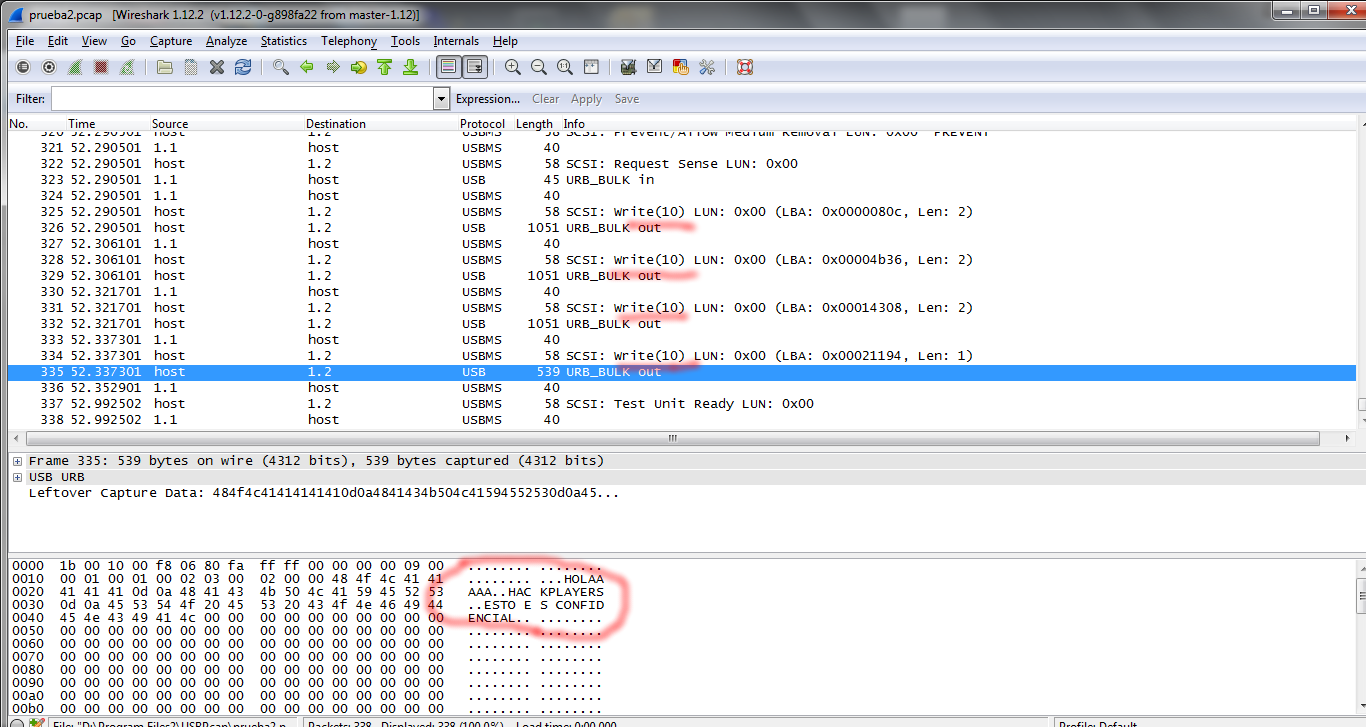Windows Wireshark Usb
USB Packet capture for Windows Tour Step 1 - identify the Root Hub you want to monitor. Step 2 - start the capture. So now you know which of the Root Hubs available in your system you want. Step 3 - analyse the data. After you’re done collecting data, press Ctrl+C and start Wireshark. You can use the USBPcapCMD.exe to select the filter instance (there is one instance per root hub) and specify the output pcap file name. Licensing: USBPcapDriver is licensed under GPLv2 license. USBPcapCMD is licensed under BSD 2-Clause license.
I would like to do the following scenario:
A laptop running Windows 10 with 1 Ethernet port. (The 'Wireshark laptop'.)
I will install a USB Ethernet dongle to the Wireshark laptop. Now the Wireshark laptop has two Ethernet ports.
Someone will hopefully tell us how to set up the network adapter software to 'bridge' Ethernet port 1 to Ethernet port 2 so that data is bidirectionally passed through the 2 Ethernet ports. This can be Windows 10 configuration, or require installing commercial software.
There are other computers here. I will run Cat 5 from the other computers into Ethernet port 1 of the Wireshark laptop, and more Cat 5 from Ethernet port 2 of the Wireshark laptop to the Internet connection.
This will allow me to capture malicious outbound data. If you install Wireshark locally, viruses have enough kernel access that they can prevent Wireshark from 'seeing' the outbound network data they send, so you must use an external sniffer. Basically I want to build a device to wiretap myself.
Could you please tell me how to set up the network adapter software to 'bridge' Ethernet port 1 to Ethernet port 2 so that data is bidirectionally passed through the 2 Ethernet ports? In addition Wireshark needs to be able to sniff from either of these Ethernet ports.
Thank you for any help and advice.
Comments
Yes, I know you asked for 'Windows', but you can do this easily with Linux with brctl.
You can run a Live Linux (such as Kali) on your laptop, set up the bridge and run Wireshark to capture the traffic passing the bridge.
Thanks. I might try it with Linux also.
Universal Serial Bus (USB) protocol is very complex. So the USB support software present in Microsoft® Windows® operating system family is also complex and provides a layered architecture where the system-supplied and vendor-supplied user- and kernel-mode components can be involved in communications over USB. Transactions performed over the USB are basically initiated by the user applications which communicate with the operating system by calling Windows API functions which in turn interact with appropriate device drivers providing access to a USB device through standard and vendor-specific interfaces.
What do you do when you want to know what is going on inside the Windows USB subsystem? What USB drivers are used to connect various peripheral USB devices to a computer? What I/O requests, support routines, structures, and interfaces the core components of the Windows USB architecture use to communicate with the USB devices? What you need is a USB Protocol Analyzer.
Analyze and Realize USB Protocol!
Windows Wireshark Usb Player
USBlyzer is an easy to use software-based USB Analyzer and USB Data Traffic Sniffer for Windows, which provides a complete yet simple to understand view for monitoring and analyzing USB Host Controllers, USB Hubs and USB Devices activity.

With USBlyzer you can:
View all plugged USB devices in hierarchical auto-refreshed tree view along with detailed information about each USB device properties and their child components:
USB device stack layout: Device objects for each driver that is involved in handling I/O activity.
USB descriptors: Device Descriptor, Configuration Descriptor, Interface Descriptor, Endpoint Descriptor, etc.
Information related to Plug and Play: Hardware IDs, Instance ID, Software Key, etc.
Capture, decode and display important information going through USB device stack:
USB-related requests such as URBs and structures used by USB device drivers.
I/O Request Packets (IRPs) used by PnP subsystem.
Kernel-mode and user-mode device I/O control requests (IOCTLs) used by USB client drivers and user-mode applications.
Incoming and outgoing data traffic of the USB devices.
Trace USB requests that the user-mode applications and USB device drivers use to communicate with the USB driver stack.
Analyze USB protocol and USB devices I/O activity with ease.
Filter to exclude non-essential information from the view.
Search the captured data for the particular request types.
Save captured data in binary file for later analysis.
Export USB descriptor hierarchy and all captured data to a file.
The detailed list can be seen on USB analysis features page.
USBlyzer is a software-based USB protocol analyzer, so you won't have to install any additional hardware or software. It runs on 32-bit and 64-bit version of Microsoft® Windows® without any compatibility issues and does not require any service pack.
Windows Wireshark Usb
USBlyzer can be successfully used for:
USB device driver development
USB hardware development
Debugging USB-related software and hardware
Exploring USB devices descriptors and properties
Capturing USB data transferred to or from the USB devices
Reverse engineering the USB protocol
Spying and analyzing the USB communications
Learning more about USB internals
Testing and troubleshooting software and hardware
You'll find USBlyzer extremely useful for understanding how system-supplied and vendor-supplied USB device drivers communicate with each other and with the peripheral USB devices such as human interface devices (HID), printers, scanners, mass storage devices, modems, video and audio devices etc.